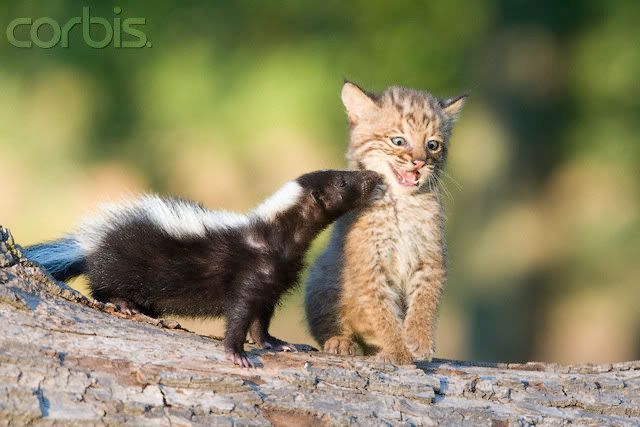Lynx rufus
Bobcats which are often called wildcats are roughly twice the size of a
domestic cat.
They are named after their bob-shaped tail which is 2 to 8 inches long.
Bobcats are often also called the Red Lynxes. The Red Lynx is related to the
Bobcat but is found in the northern regions and is lighter in colour.
They were once very popular for their pelts and almost 20 years from the
1970's the Bobcat was the most harvested cat.
A female that has young will have several dens in the area which she will
move between on almost a daily basis. By moving regularly she avoids the
build-up of her young’s' scent in the den which may attract unwanted predators
that could kill her kittens.
Within a Bobcats territory it will have a number of different dens. The main
den is usually a cave with smaller dens being in thick ground cover, rocky
outcrops or hollow trees.
Their diet consists mainly of hares, rabbits and rodents but they are
capable of taking down prey species 10 times their body weight such as deer!
Although they considered carnivores there have been no recordings of Bobcats
killing humans or even their pets.
Bobcats that make large kills may sometimes cover the carcass with grass,
leaves or even snow to hide it from would-be scavengers. They will often return
to these carcasses to feed at leisure.
In the wild they may live 10 to 15 years. In captivity these cats have been
known to live up to 25 years.
 |
| Baby Bobcat playing with baby Skunk |





















